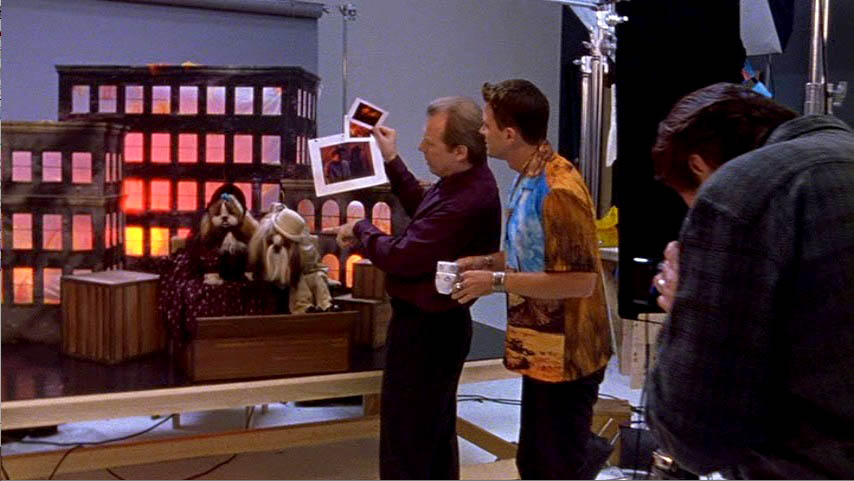Joseph T. Garrity

AS: So your whole process starts when you get the script and then you go into prep and prep involves a lot of meetings…
JG: It involves research -quickly researching whatever it is that you’ve got to be knowledgeable about. Say a movie like My Girl that I did. It was about the funeral business and mortuaries and embalming people and the life of people that do that sort of thing. I knew nothing about it. So very quickly I had to meet and go and see and watch -go down where the bodies go because we were going to recreate that as a set -the whole interior of the funeral parlor -and it was a big old house. So I had to get up to speed as to what happens and what’s the process and what kind of people do that sort of thing, and why. So I’m educating myself first, to help educate the director second. So we’re doing things correctly -the process of the funeral.
And that goes with any movie any designer would ever do unless you’re already an expert in whatever it’s about. But most of us have to do a quick research period and then it’s time to take that research and apply it to the story being told and understanding the people in it. Who are these people? What is their background? What’s their back story? Understanding that their story did not begin at the beginning of this movie- they had a whole life that led to this time. So then you understand all these people and who they are and what their background is. What’s their religion? What’s their sexual orientation? What is their connection to money and how do they spend it? What is the job that they do that maybe isn’t addressed in the script but what do they do when they go away to work? Where did they go to college? That helps with set dressing and how you can layer a room -when you understand the history of the people that are in it.
AS: And discovering the history and the people who are in it involves your own research on the script and discussing it with the director?
JG: Absolutely. Everyone has to be on the same page and then, from all that conversation you’re beginning to make choices and turn language, script language, into visual motifs and the visual and color into architecture. We turn words into architecture and furniture and color and wallpaper. And those are our tools. The DP’s tools are the camera and the lens choices and the filter choices and the camera stock choices and compositional choices and things like that. So we all have our different tools but we should all be unified by design approach or concept. So the designer with the director should really spend early prep asking how are we gonna approach this when it comes to visuals. And then the cameraman comes on and he gets to be a part of that and things shift and change but the core stays- we should all be playing in the same sandbox, you know? We all have room but there’s a wall- we can’t leave the box and do our own thing.
So the design concept -the do’s and don’ts of this movie, the rules of how this movie’s gonna look and why- is really essential. And to maintain it during production can be hard sometimes. It’s supposed to be a dry movie and now it’s raining so what do you do? Like Chinatown being about Los Angeles in a drought. If you look at it everything in that story is yellow ochres and tans and off-whites. It’s about what happens when the sun beats down on a landscape and there’s no water. It’s as simple as that and that’s what the whole look of that film is about. And you’ll see green grass only in the areas where people own water and are powerful. That’s where the green comes through. And that’s a concept, that’s an approach to telling a story visually.
Just watched Mr. CHURCH and found your name. I’m a Garrity also so it was neat to see it. I really enjoyed Mr. CHURCH and will now be watching the others mentioned, beginning with Waiting for Guffman. Nice to meet you.
….Joe – happy for you. Wonderful life you’ve designed. Continued good fortune to you!